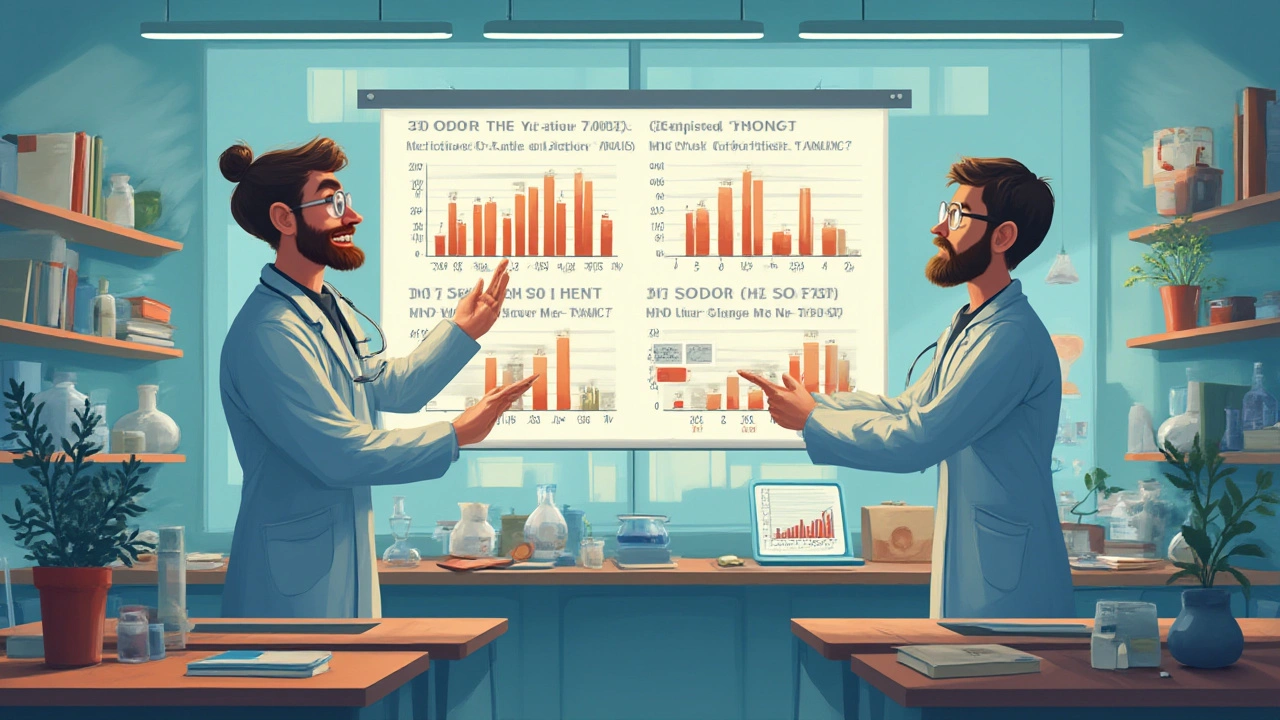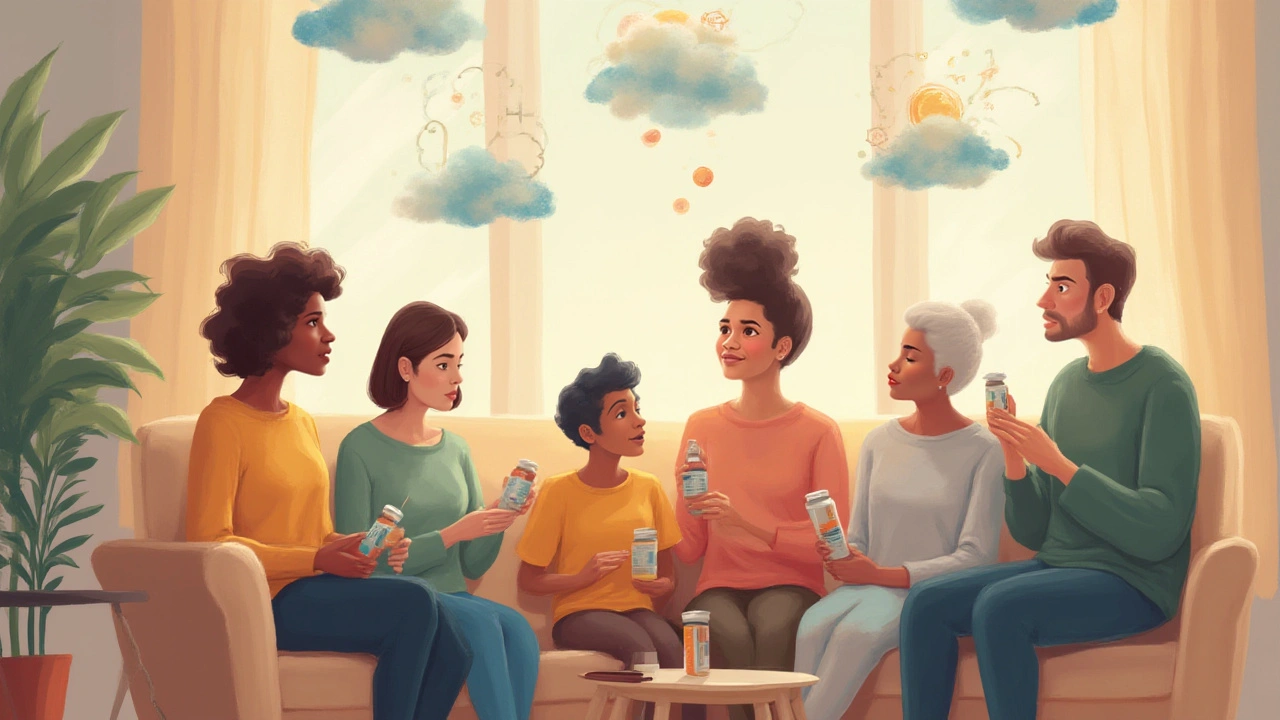Picture this: you swallow a sugar pill, told by doctors that it’s the latest breakthrough in allergy relief. Suddenly, your sneezing and runny nose settle down. But what if you’re handed a real medication that’s supposed to help you, and you start feeling queasy and anxious, just because the doctor warned of side effects? These strange twists are more than mind games. The mysterious powers driving these reactions have names: the placebo and nocebo effects. Far from being rare flukes, they shape how millions in the real world experience every prescription and over-the-counter treatment.
What Are Placebo and Nocebo Effects?
Let’s get straight to the basics. Placebos are dummy treatments – think sugar pills, saline injections, or even fake surgeries – given in clinical trials to see if a real drug works better than nothing at all. Here’s the wild twist: about one in three people report improvement after getting a placebo for problems like pain, anxiety, or insomnia. That mind-bending result is called the placebo effect—when your body reacts to a sham treatment because you expect it to work. Now, flip the script. The nocebo effect happens when negative expectations fuel unwanted symptoms. Say you read the side effects on a pill bottle and, before you know it, you’re convinced your heart is racing or your stomach’s in knots—even if you got the sugar pill.
Researchers at Harvard Medical School ran a study in the 2000s where migraine sufferers got both genuine painkillers and placebos with different labels. The twist? Placebos labeled “Maxalt” (a real migraine drug) worked nearly as well as the actual Maxalt, simply because people trusted the name on the package. Nocebos are just as real: in one 2018 trial, a third of participants taking a “harmless” pill—told it could cause nausea—reported stomach complaints, even though their pill had no active ingredient. So how do these two match up?
| Effect | Placebo | Nocebo |
|---|---|---|
| Trigger | Positive expectations | Negative expectations |
| Main Result | Improvement in symptoms | New or worse symptoms |
| Common Settings | Pain, depression, sleep | Side effects, pain sensitivity |
| How Common? | 10-60% (varies by condition) | 10-30% |
Both effects are your brain’s way of translating expectation into real, physical feelings. And scientists aren’t brushing these off as “just in your head” either—MRI scans reveal changes in brain activity, and some placebos even spark a release of natural painkillers (endorphins) in your nervous system.
The Science Behind Expectations: How Your Brain Fools (or Helps) You
Your brain works like a prediction machine. When you expect a medicine to help, your mind starts prepping for good news: flooding your body with feel-good chemicals, dialing down stress, even slowing the heart rate. Placebo responders have measurable shrinks in pain signals, boosts in dopamine, and better sleep, all thanks to expectation alone.
The nocebo effect flips that switch. Doubt, dread, and worry kick off a chain reaction: cortisol levels jump, muscles tense up, and the brain becomes hypersensitive to discomfort or irritation. There’s one classic study from the UK—patients warned before a spinal tap that they “might feel pain shooting down the leg”—a third actually did, compared to just 3% not primed by the warning. Think about how your body tenses up watching a horror movie, even though there’s nothing in your home to fear!
Here’s a cool fact: Placebo response isn’t the same across the board. People prone to optimism or who trust their doctors tend to get the biggest placebo effects. On the flip side, those with high anxiety are more likely to experience nocebo symptoms—proving that mindset isn’t just a therapy buzzword, it shapes everything from headaches to inflammation.
Modern brain scans shed more light. In 2021, UCLA researchers tracked pain responses in back patients taking sugar pills versus real analgesics. The “placebo responders” had extra activity in their prefrontal cortex and reward pathways—basically, their brain gasped “here comes relief!” before any real drug even hit their bloodstream. But if someone secretly expects harm, pain centers light up instead. It’s biology, not wishful thinking.

Real-World Examples: Where Placebo and Nocebo Shape Health Care
This isn’t just lab-coat stuff done in medical trials. Placebo and nocebo effects leak into doctor’s offices, pharmacies, and even your medicine cabinet at home. Asthma inhalers, for example, show that patients given a dummy inhaler—but told it’s potent—report almost as much breathing relief as those getting genuine medicine. In back pain research, “sham” surgeries, where a surgeon just pokes an incision without fixing anything, can leave people reporting weeks or months of less pain, compared to those on a waiting list. This has shaken up how doctors judge which treatments truly work.
Nocebo is a powerful troublemaker, too. A 2020 German survey found one in five people stopping statin cholesterol drugs due to side effects—muscle aches, brain fog—were likely experiencing nocebo, driven by online warnings or past scares, not the medicine itself. Headlines scare people about vaccinations, and some report symptoms right after a shot that fade within hours, long before the body can mount an immune response.
- Antidepressant trials regularly show that 30-40% of improvement comes from placebo response alone—meaning just being part of the trial helps, sometimes as much as the drug.
- Dentists routinely use placebo injections to calm patients’ nerves before drilling, leading to less pain and less anesthesia needed.
- Children, who are often less cynical than adults, tend to have even stronger placebo responses. Give a 5-year-old a “magical” bandage, and watch the boo-boo tears vanish.
But don’t get the idea that this is all about fooling people. Many top hospitals now factor placebo effects into pain management, anxiety care, and even how they talk to patients. Some doctors openly discuss placebos with patients who haven’t responded to medication, with surprising honesty and some positive outcomes—not as deception, but as a way to harness the body’s own healing tricks.
Why Placebo and Nocebo Matter to You (and Your Doctor)
Maybe you’re wondering, “How does this stuff change my next doctor’s visit?” It actually matters more than you think. The way your doctor explains a treatment, the trust you have in the advice, and even the color or shape of a pill can nudge your outcomes one way or another. For example, red pills are widely thought to be energizing while blue ones are calming—this isn’t just legend. A study in Italy in 2018 tracked blood pressure meds: patients who thought the pill “looked powerful” reported fewer missed doses and better results.
Nocebo is the dark side everyone wants to dodge. Doctors who let patients know every possible side effect (with gloomy warnings) tend to spark more complaints, even if the medicine is safe. Some modern clinics now use “positive framing”—for instance, saying “90% of people have no issues with this drug” instead of just listing negative risks. The results? Fewer reported side effects and better cooperation from patients.
Communication shapes how well medications work too. When patients believe their provider is listening and confident, placebo effects shoot up. Cold, rushed visits kill off trust and lead to more nocebo trouble. This is why “bedside manner” still matters, even in the age of telehealth and AI boards.
There’s a lesson for everyone popping a new pill: Don’t doom yourself by reading online horror stories or obsessing over potential side effects. Your attitude—not just the active ingredient—sets the stage for what you feel. Studies show meditation, guided imagery, or even a comforting talk with loved ones can dampen the nocebo waves, making treatments easier to tolerate.

Smart Tips for Patients: Using Mindset to Get the Most Out of Medication
Here’s where the rubber meets the road. If you want to harness the good of placebo and dodge the bad of nocebo, you don’t need to fool yourself or ignore real problems. Try these common-sense steps backed by research:
- Trust your provider: If you feel your doctor listens and cares, you heal better—proven by piles of studies.
- Avoid information overload: Don’t binge-read negative reviews or worst-case scenarios about your drug online. Knowledge is good, but doomscrolling helps nobody.
- Frame your thoughts: Before taking meds, remind yourself: “This treatment is likely to help me, and most people feel fine on it.”
- Communicate fears: If you’re worried about side effects, say so. A good doctor can help frame the risks honestly, and reassure you where possible.
- Create routines: Ritual somehow boosts positive effects. So, take your pill with a mini routine—familiar glass, favorite mug, or calming breath for a mini placebo boost.
- Ask for positive news: Don’t be shy—ask your doc about the success stories. It helps your brain expect the best, instead of bracing for the worst.
- Mindfulness matters: Short bursts of meditation or relaxation before meds can lower stress and make real symptoms less likely to spiral.
- Kid care: If you’re caring for children, keep explanations simple and positive. The less they worry, the better placebos work for them.
And don’t worry—believing in the placebo effect doesn’t mean medicine is a scam or all in your imagination. Science shows that expectation is a major co-pilot alongside chemistry. The right dose of hope can mean less pain, quicker recoveries, and happier check-ups—while dread and doubt can trigger just the opposite.


Written by Eldridge Fairweather
View all posts by: Eldridge Fairweather